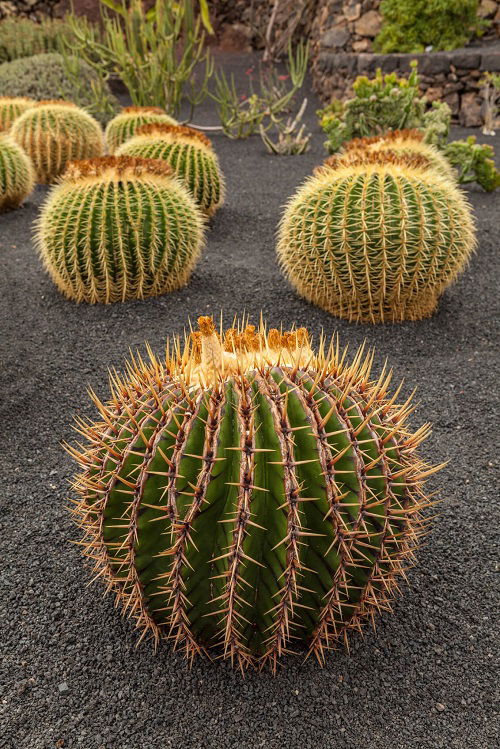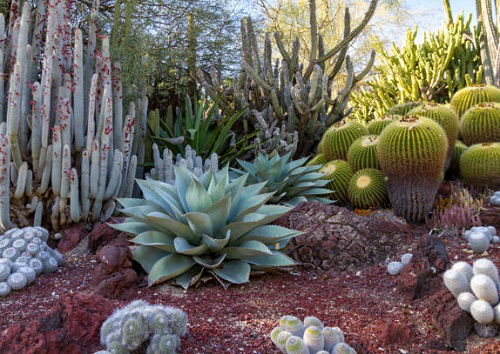Unveiling the botanical puzzle: Is Agave a Cactus? Let’s explore the surprising truth behind this captivating question.
In our desert expedition today, we delve into the captivating query: Is Agave a Cactus? Amidst the arid landscapes and spiky succulents, we unravel the surprising connection between agave and cacti.
Is Eggplant a Berry? Find out here
Agave Plant Information
The Agave plant, with its striking and unique appearance, captivates the eye with its mesmerizing charm. Native to arid regions of the Americas, including Mexico, the southwestern United States, and parts of South America, this succulent marvel has adapted beautifully to its harsh surroundings.
With its rosette-like shape, the agave showcases thick, fleshy leaves that are often armed with sharp spines and end in a pointed tip. Its leaves vary in color, ranging from vibrant green to shades of gray. Standing tall and proud, the agave truly stands as a testament to nature’s resilience and artistry.
Some agave species can grow to impressive heights, while others adopt a more compact form. What truly sets the agave apart is its remarkable ability to flower. Though it takes several years, when the agave finally blooms, it produces a majestic, towering flower stalk that can reach extraordinary heights, sometimes exceeding 30 feet.
Is Coconut a Fruit or Nut? To find out, click here
What is a Cactus?
A Cactus is a type of succulent plant that belongs to the family Cactaceae. These fascinating plants are native to arid and desert regions, primarily found in North and South America. Cacti have unique adaptations that help them survive in harsh, dry climates.
Cacti are distinguished from other succulent plants by the presence of areoles. Areoles are specialized structures from which spines, branches, and flowers emerge. These small, woolly, or bristly patches are unique to cacti and play a significant role in their classification.
While cacti come in various shapes, sizes, and appearances, their shared traits of water storage, modified leaves or spines, photosynthetic stems, and the presence of areoles collectively define what it means to be a cactus.
Are Potatoes Vegetables or Fruits? Find Out here
Is Agave a Cactus?
So, is agave a cactus? No, it is not. While agave and cacti share some similarities, they belong to different plant families. Although both agave and cacti are succulent plants and have adapted to arid environments, they have distinct characteristics that set them apart.
Agave plants typically have larger and broader leaves compared to cacti, and they lack the specialized areoles that are characteristic of cacti. Additionally, agave plants do not possess the unique stem modifications and spines commonly found in cacti.
Is Avocado A Fruit Or Vegetable? Find out here
Agave vs. Cactus
1. Appearance
Agave and cacti exhibit distinct differences in their appearance. Agave plants typically have large, fleshy leaves arranged in rosettes, often armed with spines along the edges. The leaves can vary in size, shape, and color, ranging from green to gray or even variegated patterns.
On the other hand, cacti have modified leaves called spines or clusters of spines, which can arise from areoles. Cacti come in various shapes and sizes, including cylindrical, spherical, or columnar forms.
2. Growth
Agave plants are known for their relatively slow growth. They typically have a monocarpic growth habit, meaning they flower once in their lifetime before dying. This flowering process often takes several years to occur.
On the contrary, cacti can have both slow and rapid growth rates, depending on the species. Some cacti exhibit continuous growth, while others may have periods of dormancy followed by spurts of growth.
3. Root System
Agave plants typically have shallow but extensive root systems, allowing them to absorb water quickly during rainfall or when it becomes available. These roots often spread out horizontally close to the surface.
In contrast, cacti have deep taproots that penetrate the soil to access water sources deeper underground. This enables cacti to withstand extended periods of drought and efficiently utilize limited water resources.






Please send your conduct number and address i want to purchase